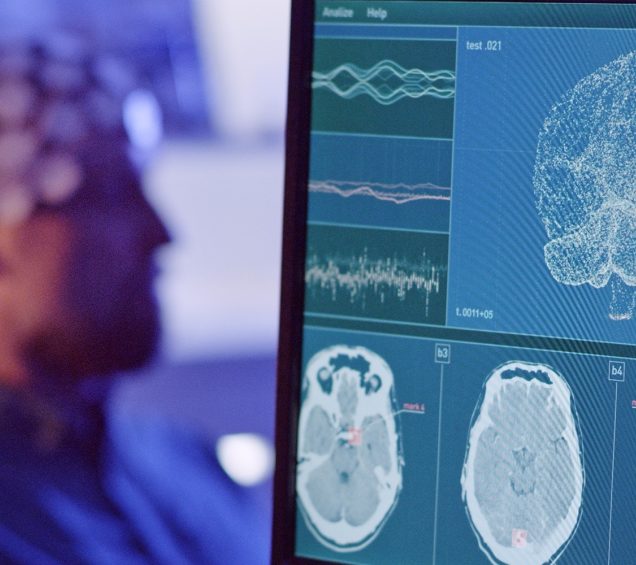Healing the Brain is Key to Treating Addiction
Medical science has known for two decades that alcohol use disorder (AUD) and substance use disorder (SUD) are diseases of the brain. Addiction physically rewires the brain, short-circuiting neural pathways in a way that drives a person to continue using, in spite of consequences. While many in society still think of addiction as a voluntary failure of willpower, improvements in medical science now allow us to assess the physical changes that addiction has caused and begin to restore the brain to homeostasis.
Before I began working in addiction medicine, I was an emergency room physician. When I had a patient with cardiac arrhythmia, it was clear to me that the heart should be the target organ for my treatment, and I would have numerous tests and tools at my disposal to examine the heart and ultimately diagnose and treat the problem. Now, working in addiction medicine, the target organ for my treatment is the brain.
The target organ in addiction and mental illness is the brain
It is becoming increasingly clear that understanding the physical changes of the brain in addiction is equally as important as addressing the psychological aspects. The issue is also much broader than just SUD. Behavioral health issues such as anxiety, depression, attention deficit disorders and posttraumatic stress also have a physical impact on the brain, interfering with the reward system, executive function, memory, attention, concentration and more. This can have a profound effect on people’s lives.
We’ve learned a tremendous amount about how the brain functions over the past 30 years. At the same time, that knowledge hasn’t been fully applied clinically to treating addiction and to help change people’s lives. Until now.
Caron has been on the forefront of Neurorestorative Health Care using new and effective technologies and therapies to heal and restore the brain to optimal function by rebuilding its connections. What makes this possible is the brain’s amazing ability to heal itself.
They used to teach that a person was born with all the neurons they would ever have - that we lost neurons throughout our lives, never to be replaced. Now we know that is not true, that the brain is able to grow new cells (neurogenesis) and make new neural pathways (neuroplasticity) throughout our lives. Neurorestorative Health Care taps into the brain’s ability to adapt and heal.
Understanding What’s Happening in the Brain
When we speak of Neurorestorative Health Care, there are two sides to the coin, so to speak:
- Assessment – where a range of tests identify potential problem areas, and
- Treatment – where the findings of the Assessment inform a road map for treatment
Today, I want to explore our assessment process. I will cover our approach to treatment more thoroughly in a later blog post.
When a patient in our Neurorestorative Health Care program first arrives at Caron, we begin with an integrated assessment to identify and define cognitive and brain function deficits. This gives us a baseline and helps us understand potential problem areas. The assessment may include blood tests for biomarkers related to specific diseases such as dementia; neuro-mapping (Quantitative EEG), cognitive proficiency screening, heart rate variability (HRV) measurement to identify stress to the central nervous system, brain perfusion deficits, and FDG-PET scans to identify and define deficits in blood perfusion and oxygenation.
One thing we look for in particular is the relative health and activity of the limbic system, the “emotional center” of the brain, as well as the medial prefrontal cortex, the “CEO” or executive function of the brain. The medial prefrontal cortex handles impulse control, while the limbic system is the source of deep-seated emotional responses to stimuli. That irrational, irresponsible returning to drugs despite adverse consequences can often be seen in an overactive limbic system which is paired with a medial prefrontal cortex that is impaired.
No one single test is diagnostic. However, together these tests give us an integrated view of potential problems from many different perspectives. The patient may present outwardly as calm and collected, for example, but the blood perfusion and oxygenation studies may show activity in parts of the brain connected with trauma and anxiety. Many people have buried their past trauma so deeply that they are no longer aware of how it affects them emotionally. This gives us a signal to explore the issue more deeply with a patient.
The assessment informs a prescriptive treatment plan, individualized to the patient, targeting specific areas of the brain that need help. Having quantitative, objective data on brain health helps patients better understand what’s really happening in their brain and how treatment may be able to help them. Many patients are initially resistant to treatment when they first come to Caron, but being able to show them objective data from the assessments can open their eyes to how desperately they need help. It also gives them hope. Finally, they and their families have a better understanding of what’s been happening and why – and have a plan on how to proceed.
In my next post, I will discuss many of the innovative therapies we use at Caron to restore brain health and help people recover for life.
Related Content
Take the next step:
Start with an online form
-
Caron in Pennsylvania
1-800-854-6023 -
Caron in Florida
1-800-221-6500 -
Breakthrough at Caron
1-800-213-7834


